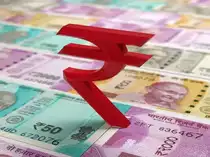- June 12, 2024
- Posted by: Amit Pabari
- Category: Uncategorized

The recent spike in volatility in Indian markets and the rupee signifies a significant shift in the political landscape, indicating a potential triumph of politics over economics after a decade.
Contrary to expectations of a comfortable victory, Modi’s BJP failed to secure a majority by itself, necessitating a coalition government.
Is it the first instance where actual results have defied exit poll predictions?
Rewinding 2004:
When the BJP was in power under Atal Bihari Vajpayee’s leadership, exit polls predicted that the NDA would be re-elected with a majority.
Yet, the results told a different story. The Indian National Congress (INC) emerged with the highest share of votes and, with the support of the UPA, successfully formed the government.
Such a dramatic shift on the national level had a direct impact on the stock market. On election result day, the Nifty 50 plummeted by 12.24%. However, it quickly rebounded, gaining 8.3% the following day.
Within five days after the election results, the index had surged nearly 16%, recovering all the losses incurred on election day.
Foreign Institutional Investors (FIIs) also reacted initially, with outflows of $783 million in May and $56 million in June. However, the following months saw substantial inflows of around $5.8 billion, stabilizing the market for the remainder of the year.
The currency market also felt the effects. Although there was some pressure on the Rupee on election result day, it appreciated by around 1.50% shortly. Thus, showing no major impact.
In 2013:
– 2013 Political Risk: The last significant political impact on Indian markets occurred in 2013 when slow growth and political uncertainty led to concerns over India’s credit rating to Junk as the growth slumped to nearly 4.3% in Q1 FY 2013.
– Modi’s Economic Policies: Modi’s tenure saw substantial economic reforms and infrastructure improvements. From ‘Fragile Five’ to “Top 5” economies, the landscape took a flip leading to a long-due upgrade in India’s outlook which improved from stable to positive. The Rupee and Equities also surged by 1.98% and 2.19% in the week following the election in 2014.
The cost of hedging against default fell (credit spread) sharply by nearly 250 bps, reflecting reduced perceived risk under Modi. Whereas, the same remained nearly constant for China and Brazil.
The credit default spread essentially represents the cost of insuring against the default of a borrower. A reduction in the credit default spread (CDS) indicates:
• Improved Creditworthiness: Lower risk of borrower default.
• Increased Investor Confidence: Greater trust in financial stability.
• Positive Economic Signals: Stronger economic indicators for sovereign or corporate entities.
• Better Liquidity Conditions: Enhanced market liquidity and investor willingness to take on credit risk.
How has a coalition government achieved in the past?
Coalition governments in India have previously led to significant achievements, such as the turnaround of the railway network under Lalu Prasad Yadav.
Infrastructure development under the NDA >> Atal Bihari Vajpayee Government (1998-2004):
• Golden Quadrilateral Project: This massive highway project aimed to connect the major metropolitan cities of Delhi, Mumbai, Chennai, and Kolkata, significantly improving road transport and boosting economic activities.
• Telecom Policy Reforms: The NDA government introduced policies that liberalized the telecom sector, leading to a telecom revolution with increased mobile phone penetration and reduced call rates.
Social and economic policies under the UPA >> Manmohan Singh Government (2004-2014):
• Mahatma Gandhi National Rural Employment Guarantee Act (MGNREGA): This act provided a legal guarantee for at least 100 days of employment to rural households, enhancing livelihood security and reducing poverty.
• Right to Information (RTI) Act: Enacted in 2005, the RTI Act empowered citizens to request information from public authorities, increasing transparency and accountability in government.
• National Rural Health Mission (NRHM): Launched in 2005, NRHM aimed to improve healthcare delivery across rural India, focusing on maternal and child health, and reducing infant mortality rates.
• Indo-US Nuclear Deal (2008): India signed a landmark civil nuclear agreement with the US, which ended India’s nuclear isolation and facilitated access to nuclear technology and fuel from other countries, boosting India’s energy security.
Major reforms and initiatives under the current NDA >> Narendra Modi fovernment (2014-Present):
• Goods and Services Tax (GST): Implemented in 2017, GST created a unified national market and simplified the tax structure.
• Pradhan Mantri Jan Dhan Yojana (PMJDY): This financial inclusion initiative aimed at opening bank accounts for the unbanked population, facilitating direct benefit transfers, and improving access to financial services.
• Swachh Bharat Abhiyan: Launched in 2014, this nationwide cleanliness campaign aimed at eliminating open defecation and improving solid waste management, significantly improving sanitation standards
Hence, though the process might get a bit challenging, a coalition shouldn’t be a hurdle for the bright future that India holds.
Fast forward to the present day:
The markets and rupee experienced a roller coaster ride in the past few sessions. With both Rupee and Nifty rising initially to experience a sharp fall to again gaining positively.
Well, does the drama get over with the Election???
Apparently it doesn’t seem like it, as Mr. Gandhi called on the JPC (joint Parliamentary Committee) to investigate the recent pump and dump of the stock market and referred to the June 4 crash as “the biggest stock market crash scam”.
With the political spat likely to continue for a while, moving on, it will be closely watched if the election theatrics take further twists and turns. This can keep the Equity and Currency markets highly volatile.
Looking ahead, the question remains: What will happen to the Rupee once the dust settles?
What is the RBI’s intention for Rupee?
However, the RBI’s timely intervention curtailed further decline through dollar sales in the onshore market. Another asset class impacted was the India 10-Year Bond Yield, which jumped by 9 basis points to trade at 7.03%, up from the previous day’s close of 6.94%, marking its lowest level in the last two months.
For the Rupee, as witnessed in the past two sessions, the strength was curbed by RBI by buying around 82.95-83.00 levels, and the upside too was protected towards 83.50-70 by selling dollars.
As the initial reactions to the election outcome subside, though the volatility may persist, the Rupee might trade within 82.90–83.70 broadly.
Overall, the outlook remains optimistic once market sentiments calm and the political situation becomes clearer. However, in the short term, a selling zone seems to be formed between 83.50-83.70 and a buying zone remaining around 82.90-83.10 levels.
Amit Pabari is a managing director ar CR Forex Pvt Ltd. The views expressed in this article are his personal views.
Source: https://rb.gy/bwg0eb




